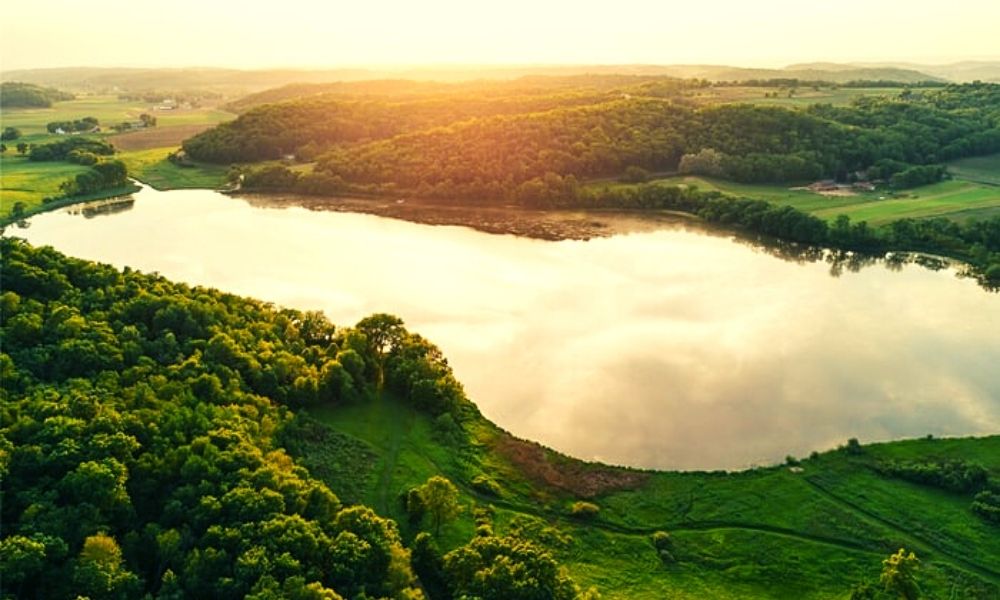
Image Credits: Unsplash
Greening Big Way: Largest Human Made Forest Project To Come Up In Chhattisgarh
Writer: Tashafi Nazir
For most people, journalism sounds hectic and chaotic. For her, it's a passion she has been chasing for years. With an extensive media background, Tashafi believes in putting efforts on presenting a simple incident in the most interesting way.
Chhattisgarh, 18 July 2021 11:03 AM GMT | Updated 18 July 2021 11:49 AM GMT
Editor : Ankita Singh |
A literature lover who likes delving deeper into a wide range of societal issues and expresses her opinions about the same. Keeps looking for best-read recommendations while enjoying her coffee and tea.
Creatives : Tashafi Nazir
For most people, journalism sounds hectic and chaotic. For her, it's a passion she has been chasing for years. With an extensive media background, Tashafi believes in putting efforts on presenting a simple incident in the most interesting way.
The project has been formulated in lines with the UN Decade on Ecosystem Restoration that calls to protect and revive ecosystems all around the world. It also aims to halt the degradation of ecosystems, and restore them to achieve global goals.
Intending to restore the ecological glory in the state, the Chhattisgarh government plans to introduce India's biggest human-made forest area by converting a 2,500 acre of barren land into natural habitat at Nandini mines located in the Durg district.
The project has been formulated in line with the UN Decade on Ecosystem Restoration that calls to protect and revive ecosystems worldwide. It also aims to halt the degradation of ecosystems and restore them to achieve global goals.
Steel and cement industries domain the region in the twin cities of Bhilai and Durg, which consists of a significantly less dense patch of greenery. So to restore the verdant glory, the concept will help curb pollution and strike a balance with the environment.
The project would span for five years. As part of the first phase, the initial plantation work would be done on a stretch of 885 acres of Nandini mines. Nandini is 25 kilometres away from Durg town. Mahua, peepal, banyan and the trees having a longer life span will be given preference.
Reviving Ecosystem
"It's like a contribution for 'UN decade on ecosystem'. With a scientific approach, we are planning to revive the ecosystem and taking reference from tropical dry deciduous forests sub-type, it will be replicated with similar species of plants," Dhammshil Ganvir divisional forest officer, Durg range said while speaking to The Times Of India
"Following the Japanese botanist Miyawaki's forest technique, Nandini will be converted into a multi-layered forest with herbs, shrubs, middle and high canopy trees. Around 3,000 seed balls will also be used for the spot where proper planting isn't possible," he added.
The project would be at par with the Miyawaki forest method, which involves planting two to four trees per square metre. In this method, plants grow within two to three years and can sustain themselves.
They help lower temperatures in concrete heat islands, reduce air and noise pollution, attract local birds and insects, and create carbon sinks. The method advocates the planting of diverse native species, thereby bringing in more biodiversity in comparison to monoclonal plantations. Subsequently, the revival of the three cycles of ecosystems of water, energy and nutrients would come into effect. This would clean the air and take care of the water harvesting soil facility.
Officials said that the project would also include wildlife shortly. Since the place is a wetland, it could also become a suitable spot for breeding birds like whistling ducks and open bill storks, among other breeds.
With an initial budget of about ₹3.37 crore, the place will be converted into an open jungle safari, like the one in Africa. This will be India's largest human-made forest after Assam, which has 1300 acres of largest forest presently.
Chhattisgarh is not the only state that has taken measures for ecological restoration in recent times. Last week, the Telangana government retrieved at least 160 acres of encroached and degraded forest patch in the core area of the Kawal Tiger Reserve and converted it into a lush green forest. The patch falls under the Khanapur forest division near Devunigudem village in Nirmal district. The transformation started in 2015 with the first edition of Telangana Ku Haritha Haram—state's tree plantation program.
Central Programmes To Restore Forests
According to a press release by the Ministry of Agriculture and Farmers last year, an area of over 2 million was approved for afforestation at the cost of ₹ 3874 crore under the 'National Afforestation Programme (NAP)' to restore degraded forest areas. It also states that the country is committed to achieving land degradation neutrality status by 2030. It has also raised its ambition to restore degraded land from 21 mha to 26 mha by 2030.
Various other schemes like Green India Mission, funds accumulated under Compensatory Afforestation Fund Management and Planning Authority (CAMPA), Nagar Van Yojana etc. also help check degradation and restoration of forest landscape. MoEF&CC also promotes tree outside forests, realizing that the country has considerable potential for increasing its Trees Outside Forest (TOF) area primarily by expanding agroforestry, optimum use of wastelands and vacant lands.
Also Read: Telangana Forest Department Transforms 160-Acre Barren Land Into Verdant Glory
 All section
All section














